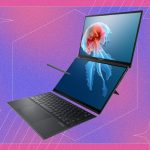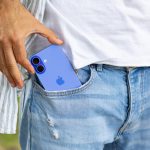Apple
- Apple’s iPhone uses a proprietary charging cable and port, known as “Lightning.”
- The smartphone giant may be forced to switch iPhones to USB-C under a new European Union proposal.
- Apple would have two years to make the change – but it could switch to wireless charging by then.
- Visit the Business section of Insider for more stories.
Apple’s iPhones are notorious for using proprietary cables and ports – electronics that work exclusively with Apple devices.
But that could all be coming to an end with Apple being forced to switch from its proprietary Lightning cables and ports to the universal standard USB-C, under a new European Union proposal.
“USB-C will become the standard port for all smartphones, tablets, cameras, headphones, portable speakers and handheld video game consoles,” the proposal by the EU’s executive arm, the European Commission, said. “In addition, the Commission proposes to unbundle the sale of chargers from the sale of electronic devices.”
If adopted by the European Parliament and the Council, electronics makers would have 24 months to reach compliance.
Given that the vast majority of consumer electronics devices already use USB-C, from Android smartphones to Nintendo’s Switch game console, the proposal would disproportionately impact Apple.
Apple
Though the company has adopted USB-C for some of its devices in the past few years, including laptops and tablets, the iPhone lineup has stuck with the Lightning cable and port.
The reason for the standardization, the EU Commission said, is twofold: To “improve consumers’ convenience and reduce the environmental footprint.”
In a statement, Apple said it agreed with the Commission’s proposal in terms of its goals, but disagreed with the method.
“We share the European Commission’s commitment to protecting the environment,” the statement said. “We remain concerned that strict regulation mandating just one type of connector stifles innovation rather than encouraging it, which in turn will harm consumers in Europe and around the world.”
Notably, electronics makers could instead choose to skip a charging port altogether and make the device entirely wireless via wireless charging. “If the electronic device is capable of being charged via wired connection…then there [are] no requirements to integrate a USB-C charging port,” a spokesperson for the EU Commission told The Verge.
Got a tip? Contact Insider senior correspondent Ben Gilbert via email (bgilbert@insider.com), or Twitter DM (@realbengilbert). We can keep sources anonymous. Use a non-work device to reach out. PR pitches by email only, please.
Powered by WPeMatico





